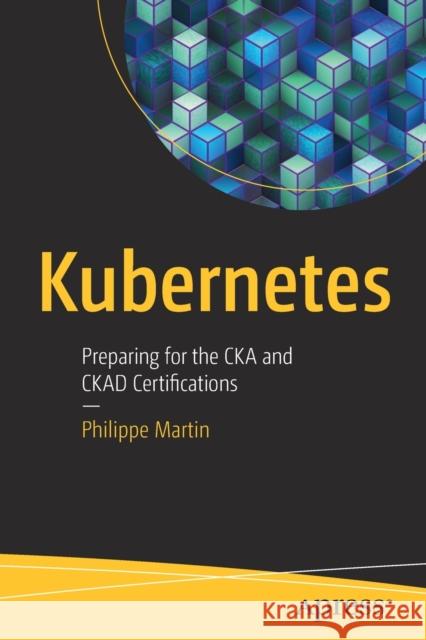Kubernetes: Preparing for the CKA and CKAD Certifications » książka



Kubernetes: Preparing for the CKA and CKAD Certifications
ISBN-13: 9781484264935 / Angielski / Miękka / 2020 / 231 str.
Kubernetes: Preparing for the CKA and CKAD Certifications
ISBN-13: 9781484264935 / Angielski / Miękka / 2020 / 231 str.
(netto: 200,16 VAT: 5%)
Najniższa cena z 30 dni: 210,17
ok. 16-18 dni roboczych
Bez gwarancji dostawy przed świętami
Darmowa dostawa!
Intermediate level professionals
Philippe Martin has been working with Kubernetes for three years, first by creating an operator to deploy video CDNs into the cloud, later helping companies deploy their applications into Kubernetes. Philippe passed the CKAD certification about a year ago and the CKA certification recently.
He has long experience with distributed systems and open-source software: he started his career 20 years ago creating thin clients based on the Linux kernel and open source components.
Philippe is active in the development of Kubernetes, especially its documentation, and participates in the translation of the official documentation into French, has edited two reference books about the Kubernetes API and kubectl, and is responsible for the French translation of the Kubernetes Dashboard.
Master all the concepts and tools necessary to start administering a Kubernetes cluster and deploying applications to production. You will cover the entire curricula of the two Kubernetes certifications (for application developers and administrators).
The initial chapters guide you through deployment of a Kubernetes cluster on virtual machines and explore the different components of the control plane. Next, you will work with the kubectl command-line tool; namespaces, labels, selectors, and annotations—common resources used through the Kubernetes API. The following chapters describe the principle of controllers and detail how workload controllers work as well as the possibilities for configuring deployed applications.
You will also learn how to deploy a scalable and self-healing application, how pods are scheduled to nodes, how parts of the application can communicate, and how the application is discoverable from the outside. Next, you will cover security concerns describing the different authentication methods, the RBAC authorization mode, security contexts, network policies, and how to secure container images. You will also cover using persistent volumes for your containers to store long-term data, monitoring your clusters and applications and implementing design patterns for multi-container pods. The concluding chapters guide you through the upgrade of your deployed cluster.
After reading this book, you will have enough knowledge to deploy a complex application using a Kubernetes cluster and be ready for the certification exams.
You will:
- Deploy a Kubernetes cluster with kubeadm and learn how the control plane works
- Discover how the Kubernetes API is structured
- Deploy secure, auto-scaled, and self-healing applications
- Master the kubectl command-line tool
1997-2025 DolnySlask.com Agencja Internetowa
KrainaKsiazek.PL - Księgarnia Internetowa









